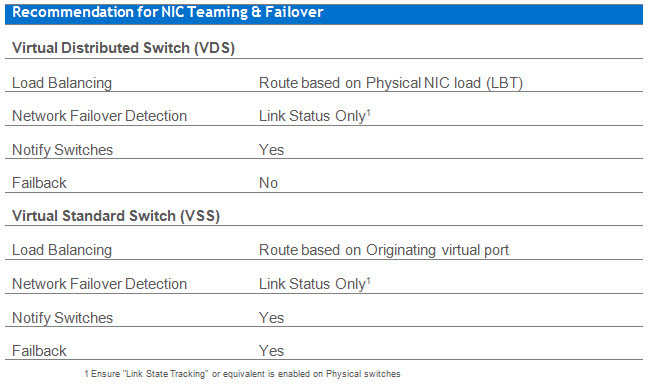The following shows the available Load Balacing options currently available in vSphere 5.5 along with the recommended configuration for Nutanix environments for both Virtual Distributed Switches (VDS) and Virtual Standard Switches (VSS).
NIC Teaming & Failover Recommendation
Enter your E-mail address. We'll send you an e-mail with instructions to reset your password.







